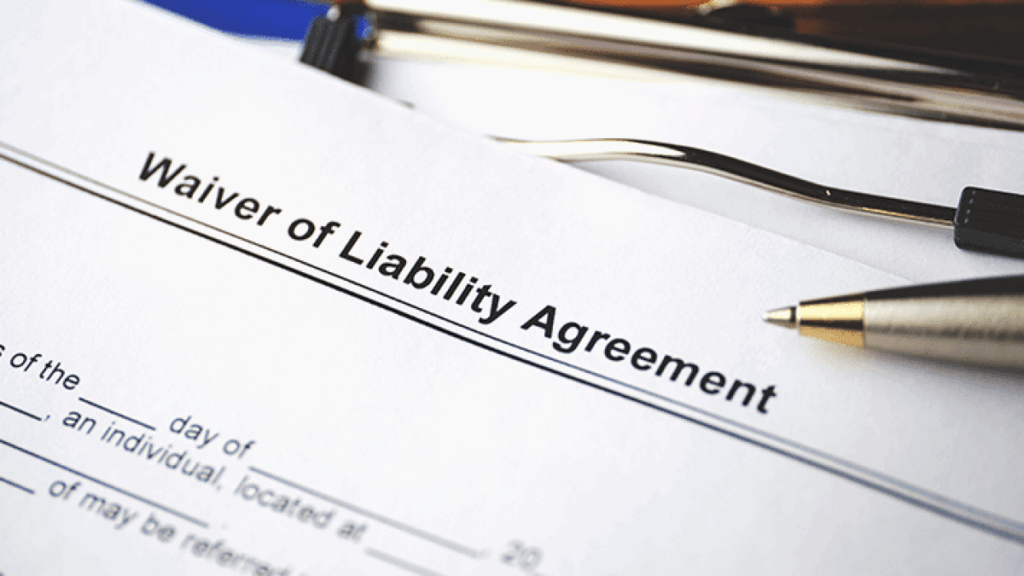In the not too distant past, we attended an insurance information session that the County of Grande Prairie offered. The biggest takeaway was the difference between Activity Waivers and Acknowledgement of Risk.
takeaway was the difference between Activity Waivers and Acknowledgement of Risk.
Of course that means we had to look into it a bit further so we could share it with you.
The biggest takeaway was the difference between what many think of as an ‘Activity Waiver’ and a true ‘Acknowledgement of Risk’. While many organizations use documents they call ‘waivers’, these are often not legally enforceable against negligence if an incident occurs. Conversely, an Acknowledgement of Risk form is a powerful document where participants confirm their awareness of inherent risks and choose to participate anyway.
(*Please consult your own legal representative or your Provincial Sport Organization (PSO) for advice specific to your situation on the specifics of your document.)
Why Your Sport Group Needs to Understand Waivers and Acknowledgements of Risk
As a sport organization, you’re dedicated to providing amazing opportunities for athletes, coaches and volunteers. Whether it’s a regular practice, a big tournament or one of our Try-It Day events, safety is always top of mind. But beyond the helmets and proper coaching, what about the paperwork designed to protect your club?
Let’s dive into the two documents: activity waivers and acknowledgements of risk. Understanding the difference isn’t just legal jargon; it’s vital for safeguarding your organization and ensuring clarity for your participants. Understanding these distinctions also significantly impacts your organization’s insurance coverage and claims process, as insurers will look at the strength of your risk management and documentation.
 The Misconception: “Just Sign This Waiver”
The Misconception: “Just Sign This Waiver”
It’s common practice to have participants sign a “waiver” before an activity. The general idea is that this document will prevent someone from suing your organization if they get injured. And while that’s the aim, the reality in Canada, especially here in Alberta, is far more nuanced.
Canadian courts have become increasingly consumer-friendly. For a waiver to truly hold up in court, it needs to be meticulously drafted and correctly implemented. If it’s too broad, hidden in fine print or doesn’t clearly outline all risks (including those related to the organization’s potential negligence), a judge is more likely to deem it unenforceable.
Introducing the Acknowledgement of Risk: An Educational Tool
On the other hand, an Acknowledgement of Risk form serves a different, but equally important, purpose. Think of it as an educational tool. When a participant signs this form, they are formally declaring that they understand and accept the inherent risks of an activity.
What are inherent risks? These are the dangers that are an unavoidable part of the sport itself, even when everyone is being careful. For example:
- A fall during a gymnastics session.
- A collision in a hockey game.
- Sprains or strains from vigorous physical activity.
An Acknowledgement of Risk demonstrates that your organization has taken reasonable steps to inform participants of these natural risks. Courts are generally more inclined to uphold these forms because their focus is on the participant’s informed awareness, not on trying to waive their fundamental right to sue for negligence.
The Crucial Distinction: What About Negligence?
This is where the rubber meets the road. The key difference between a strong waiver and an acknowledgement of risk lies in the concept of “negligence.”
Negligence occurs when an organization, its staff or volunteers fail to act with reasonable care, and that failure leads to an injury. Examples could include:
- Providing faulty or poorly maintained equipment.
- Inadequate supervision during a session.
- Failure to address known hazards in a facility.
- Not providing proper or safe instruction for an activity.
- A well-drafted waiver aims to explicitly state that the participant is also waiving their right to sue for injuries caused by the organization’s negligence. It attempts to release your club from this specific type of liability.
- An Acknowledgement of Risk form typically does not cover negligence. It’s solely about accepting the risks that are part of the sport itself, regardless of anyone’s actions. If an injury occurs due to your organization’s negligence, the Acknowledgement of Risk alone is unlikely to protect you from a lawsuit.
The Youth Factor: A Unique Challenge
For our sport groups, many of whom provide programming for youth there’s an added layer of complexity. In Canada, minors generally cannot legally sign away their rights. While parents often sign “waivers” on behalf of their children, these documents are often more accurately viewed as:
- An Acknowledgement of Risk for the Child: Confirming the parent understands the inherent risks the child is undertaking.
- An Indemnity for the Parent: This may bind the parent to cover legal costs if the child sues, but it generally cannot stop the child’s lawsuit itself for negligence.
This means that for youth programs, robust risk management practices become even more paramount. Your primary defense against lawsuits involving minors is ensuring safe environments, proper equipment, adequate supervision and well-trained personnel.
The Recommendation: Understand, Educate, Protect
Instead of relying solely on a document labelled “waiver” that may not fully protect you, we encourage all sport organizations in the Grande Prairie Region to:
- Understand the Nuances: Recognize the significant legal distinction between an effective waiver (which covers negligence) and an acknowledgement of risk (which covers inherent risks).
- Educate Participants: Use Acknowledgement of Risk forms to clearly and transparently explain the inherent risks of your sport to participants and their parents. This builds trust and demonstrates due diligence.
- Prioritize Risk Management: Focus on comprehensive safety protocols, regular and documented equipment checks, appropriate supervision ratios and clear emergency plans. This is your strongest line of defense, especially for youth programming.
- Seek Professional Advice: For a true liability waiver that aims to cover negligence, it is crucial to consult with a legal professional, your PSO and/or your insurance provider. The PSO may already have a document tailored to your activity. A lawyer can help draft a document that is clear, explicit and as enforceable as possible under Canadian law, tailored to your specific activities.
By understanding these differences and proactively managing risk, your sport organization can continue to provide fantastic, safe experiences for everyone in the region, strengthening our vibrant sport community.
